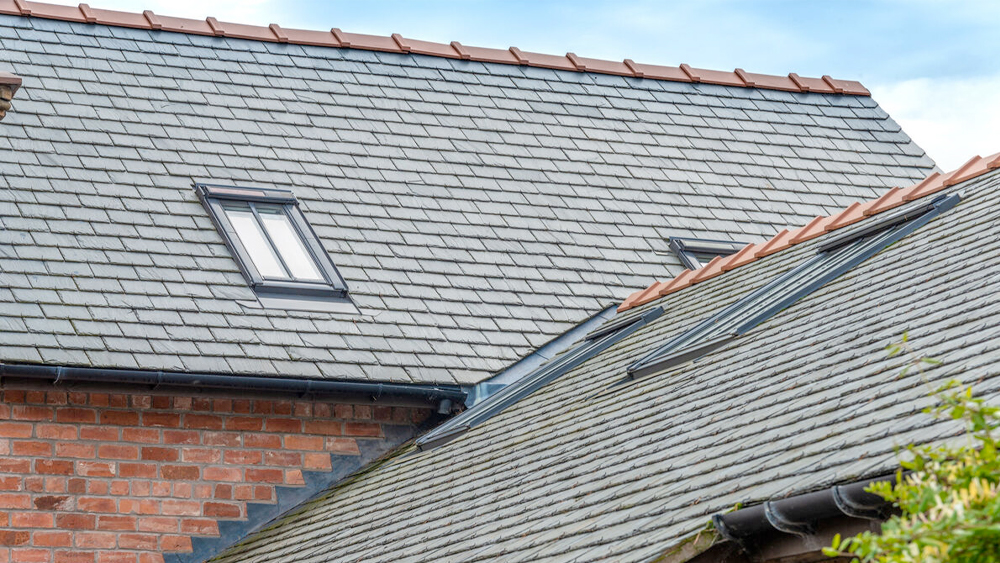
While there are a variety of sizes, shapes, colors and styles of slate used on roofs, most slate roofs can be divided into two basic categories: hard and soft.
”Hard slate will last anywhere from 75 to 200 years, while soft slate will last only 50 to 125 years. A homeowner trying to decide whether to repair, restore or replace a slate roof should first determine whether the existing slate is hard or soft.
Colored slates are almost always hard slate and black slates are almost always soft. (There are some black slates that are hard, and there are some colored slates that are soft because they’re really black slates that have been faded by the sun.) In any case, a slate expert — known as a ”slater” — will be able to tell hard slate from soft simply by tapping on it.
In most cases, leaks in slate roofs are caused either by broken or missing tiles or faulty flashing. If the problem is with the tiles themselves, he said, repairs can easily be made by an experienced slater. ”All you have to do is pull out the bad slates and replace them with good ones. One mistake many homeowners make is to wait until there are several broken or missing slate tiles before calling in a contractor.
A slate roof is regarded as the best roof you can buy,” ”It’s also one of the most expensive roofs to install.”
In most cases, a slate roof installation — including the slate itself and removal of the existing roof — will cost about $1,500 per square, with each square equal to a 10-by-10-foot area.
The square footage of a roof is usually about the same as the total square footage of the house. So a 2,000-square-foot house would require 20 squares, and a new slate roof would cost about $30,000.
Slate Roofs Texture and Colors
Texture and color are where things get interesting. Texturing, or surface features, occur naturally with how the rock is exposed to pressure over (very) long periods of time. It is generally flat and mainly smooth, but again there is a whole lot of variation that can and does occur. Same goes with color.
Common colors are green, gray, black, purple and red. Sometimes flecks of colors appear to provide multicolored plates, or whole surface colors give it its unique look.
Then there exists the possibility of mixing color tiles throughout the roof.

Texture and color are where things get interesting. Texturing, or surface features, occur naturally with how the rock is exposed to pressure over (very) long periods of time. It is generally flat and mainly smooth, but again there is a lot of variation that can and does occur. The same goes with color.

Common colors are green, gray, black, purple and red. Sometimes flecks of colors appear to provide multicolored plates, or whole surface colors give it its unique look.
Then there exists the possibility of mixing color tiles throughout the roof.

Advantages
- Longevity, a century or longer
- Natural beauty that is rivaled by only wood (i.e. cedar shake roofing)
- Waterproof, fireproof, and so dense that most other elements and animals cannot tarnish it.
- A multitude of available options
Disadvantages
- Pricing. Compared to all other materials it is very expensive, though the value it offers must be taken into consideration on this point.
- Fragile. While it is extremely durable, it can be damaged just by walking on it haphazardly. And because tiles are rather unique to a lot, replacement tiles aren’t exactly easy to find.
- Slate roof quality can be enhanced significantly when installed by well-trained seasoned slate specialists, or conversely improper installation can be a huge detriment to the long-term quality and durability.
- Not for every home, need a specialist to determine if your home can handle the enormous extra weight.

Schedule Your Free Consultation
Our project specialist will call you to get the details of your project. They’ll answer all your questions and help you select the products that are right for your project and your budget.



